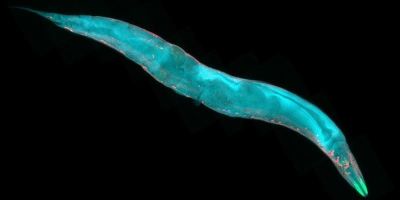Researchers grapple with nuclear legacy
The University of Leeds will lead a consortium of 10 universities in a national research programme looking at ways of dealing with Britain’s nuclear waste.
The £8 million project, funded by the Engineering & Physical Sciences Research Council (EPSRC), will start in February and bring together the nuclear industry, the Government’s nuclear advisors and the country’s leading academic researchers.
More than 40 doctoral and post-doctoral researchers will work over the next four years on issues including how best to handle different types of spent fuels, packaging and storing waste, and dealing with nuclear sludges in ponds and silos at nuclear power stations.
Professor Simon Biggs, Director of the University of Leeds’ Institute of Particle Science and Engineering, who will lead the University consortium, said: “The project is primarily focused on developing new technologies and providing confidence in the safe storage and disposal of legacy waste. The UK is a technology leader in this field and the core aim of this project is to maintain and further develop that skill base.”
He added: “This will be a truly interdisciplinary effort. We have civil engineers, chemists, chemical engineers, robotics experts, radiochemists, mechanical engineers and material engineers all working together on thirty different projects.”
The National Nuclear Laboratory (NNL), Nuclear Decommissioning Authority (NDA) and Sellafield Limited will be partners in the project, alongside the Universities of Leeds, Birmingham, Bristol, Imperial, Lancaster, Loughborough, Manchester, Sheffield, Strathclyde and UCL.
Much of the UK’s legacy waste is kept at the Sellafield site in Cumbria.
Sellafield Limited's Research Alliance Manager Neil Smart said: “Today, Sellafield faces a challenge where there is no blueprint; emptying and demolishing some of the most difficult and complex nuclear buildings in the world – the decommissioning of historic reactors, reprocessing facilities and associated legacy ponds and silos.
“This massive challenge is however an opportunity to demonstrate that Sellafield is still at the forefront of the UK’s nuclear industry and we are delighted that the EPSRC is supporting appropriate academic research that will contribute to the scientific and technical underpinning of our mission. We look forward to engaging in these projects and benefiting from the outcomes, not only in terms of the science and technology but also the skilled people developed through these projects with the potential to enhance our workforce long into the future.”
Graham Fairhall, Chief Science and Technology Officer at the NNL, which provides experts and technologies to government and the nuclear industry, also welcomed the project.
“Having 10 of the UK's leading universities working collaboratively with industry in this important area makes this a very significant programme,” he said. “We are pleased to be involved in a number of ways, including supervision of more than half of the projects and making the world-leading facilities in our central laboratory on the Sellafield site available to support several strands of the work.”
The NDA’s Head of Research and Development, Melanie Brownridge, said: “Our industry benefits hugely when high-level academic research is focused at some of the challenges we face in decommissioning our nuclear legacy. We welcome this collaboration and look forward to seeing the progress that these important projects will deliver. Equally valuable will be the development of knowledge and expertise for the participants – we hope their skills with be with us for many years ahead.”
The project will be formally called Decommissioning, Immobilisation and Storage solutions for Nuclear waste Inventories (DISTINCTIVE) - and follows an earlier programme, also led by Leeds and announced by the EPSRC in 2007, that was known as DIAMOND.
The EPSRC will provide a £4.9 million grant to the new project, with additional funding and support coming from the Universities and the industry partners.
Research will be organised under four themes: AGR, Magnox and Exotic Spent Fuel; Plutonium oxide and Fuel Residues; Legacy Ponds and Silos Wastes; Infrastructure characterisation, restoration and preservation. Each project will have an industrial supervisor from either NNL or Sellafield Limited.
Images have been provided by the National Nuclear Laboratory (NNL).
Further information:
Chris Bunting, Press Officer, University of Leeds; phone +44 (0)113 343 2049 or email c.j.bunting@leeds.ac.uk.
Adrian Bull, Director of External Relations, National Nuclear Laboratory; phone +44 (0) 7894 83655 or email adrian.j.bull@nnl.co.uk.
Deborah Ward, Corporate Communications Manager, Nuclear Decommissioning Authority; phone +44 (0)7980 930838 or email deborah.ward@nda.gov.uk.
Karl Connor, Press Office Manager, Sellafield Limited; phone +44 (0) 19467 85842 or email karl.w.connor@sellafieldsites.com.
Related Articles
The Engineer - University consortium to tackle UK nuclear waste treatment




